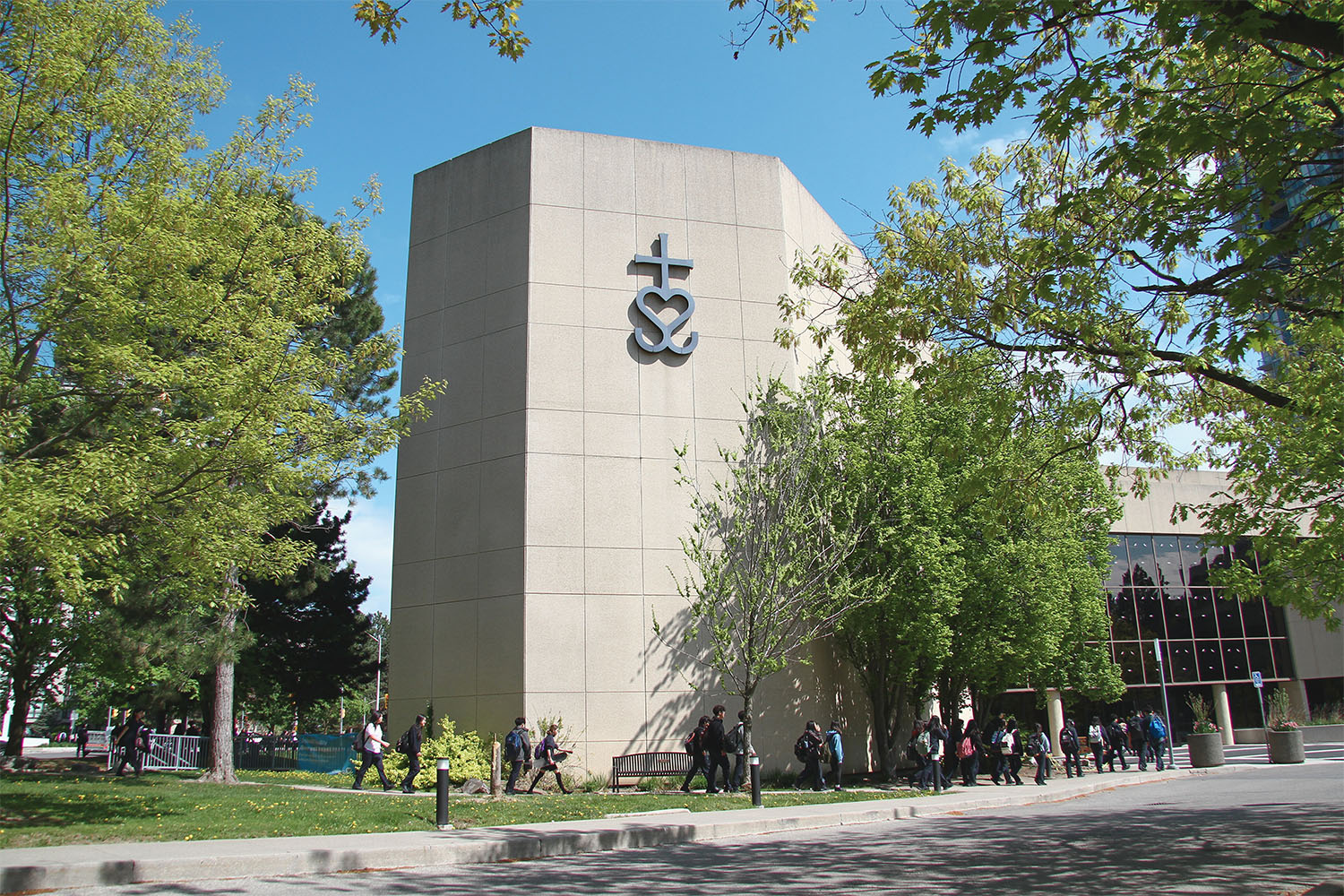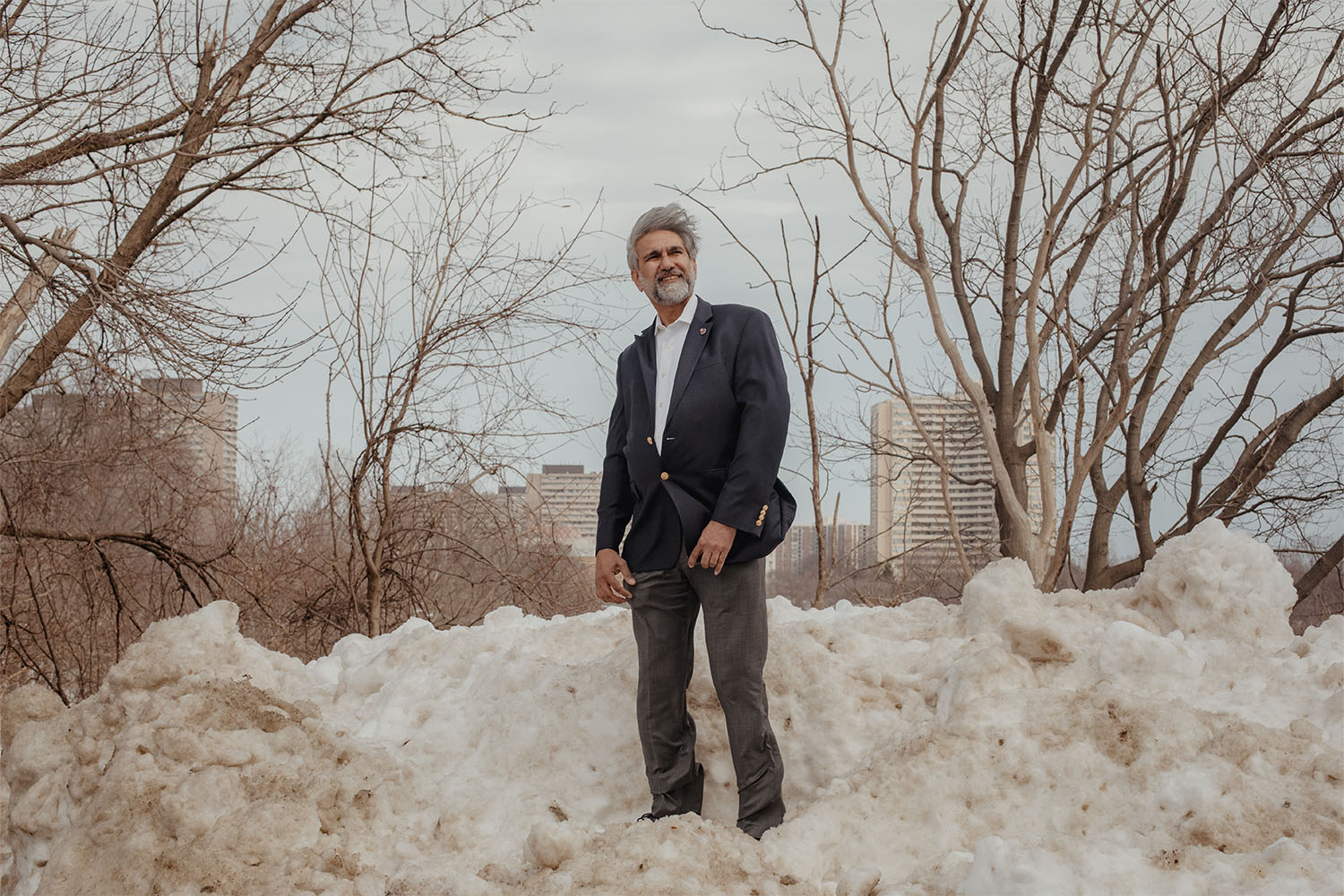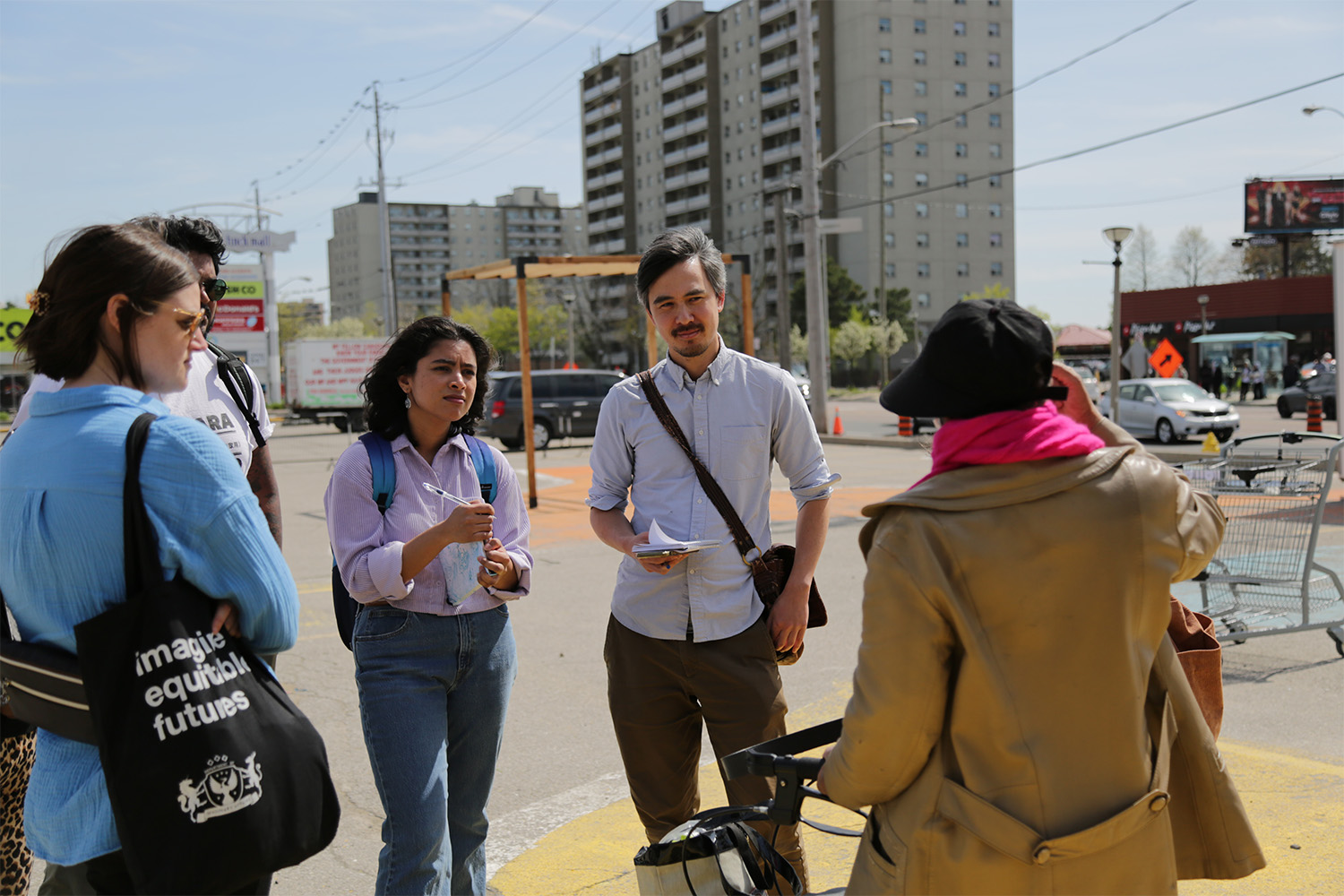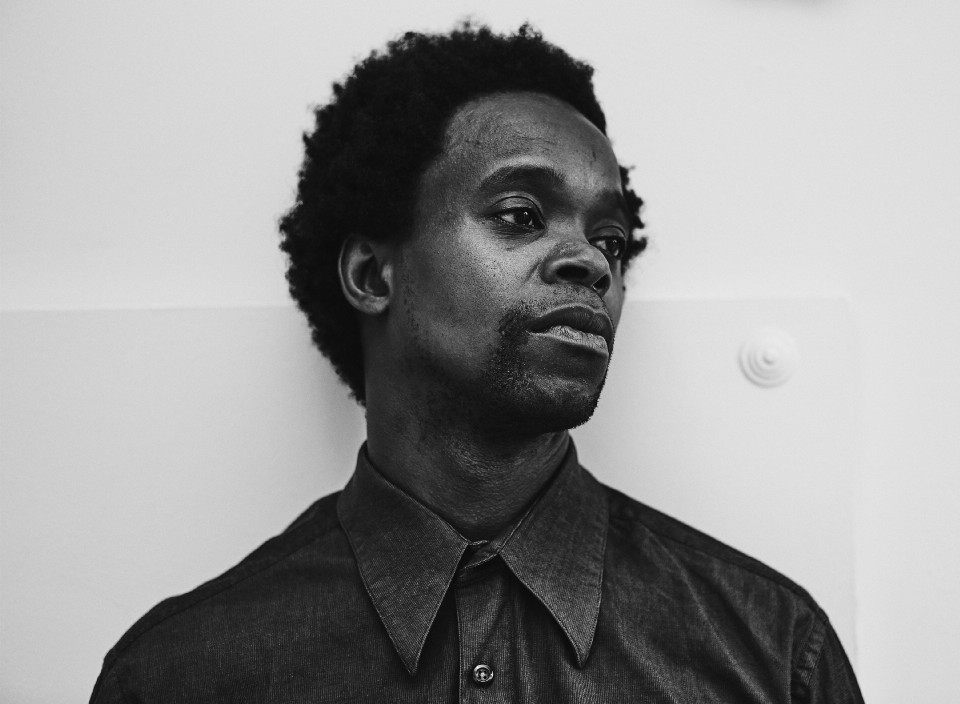
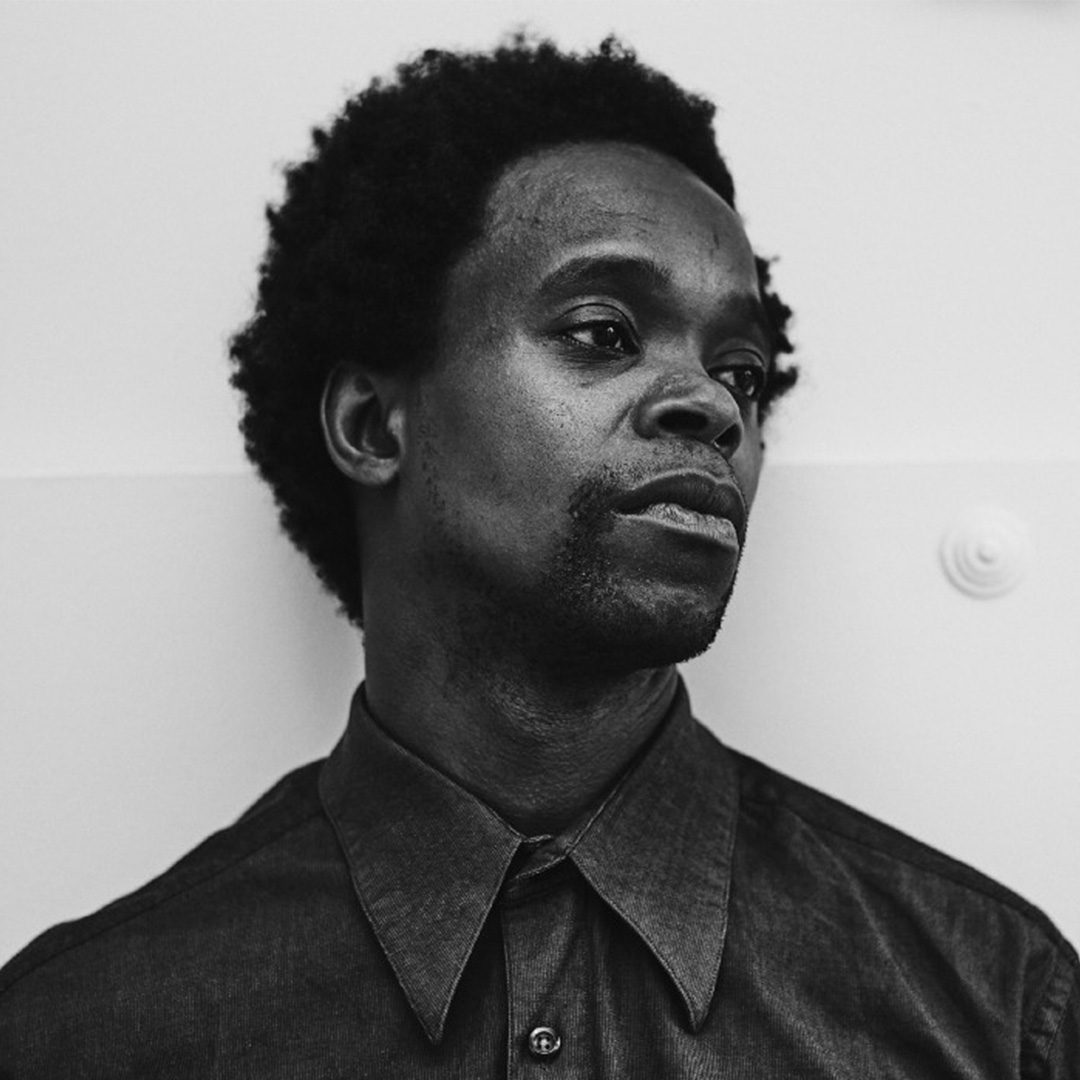
When Lebohang Toby Nicol was at his lowest — and at times he felt he’d sunk so low his old life looked like some impossibly distant patch of sky above him — the people at detox dreaded the sight of him. “Oh, it’s you,” they would say, shaking their heads.
From 2007 to 2012, Nicol spent his nights in Toronto shelters and his days on the street. He was an alcoholic and a drug addict. He stole, at first with a kind of swagger — thinking himself a professional criminal — and then with the oblivious clumsiness of a desperate man, stumbling through the liquor store and grabbing a bottle in front of the pitying eyes of a security guard. He’d end up in jail and get tossed out again. He’d find himself in the emergency department after passing out in the street or, worse, getting beaten up by one of the predators who scoured the downtown east side looking for anyone with a social assistance cheque. He suffered from depression and anxiety, though he didn’t have those words at the time. He only knew that after attending detox, when the drugs and alcohol left his system, he would be left walking around with his own thoughts. And one of those thoughts, the most insistent, was that maybe he just didn’t want to live anymore.
Nicol, Toby to his friends, has a slight build and a shy demeanor. He has big brown eyes that he opens wide when he listens, cocking his eyebrows and tilting his head forward ever so slightly. He was born in South Africa and spent his first five years on the street and in orphanages — a period that left no clear memories, just a vague underlying trauma. When he was five, a Mennonite pastor and a nurse adopted him and brought him to their home in Sudbury, Ontario. Being the only black kid at school in a tough mining town was difficult. “Kids called me the N-word twice a day, threw rocks at me,” says Nicol. It made him feel terrible, but what could he do? Stay at home? Instead he joined the ski team, played soccer, ran track.
When he graduated, he got a job at Tim Horton’s and worked his way up to manager. He coached a kids soccer team and had his own place. “I was doing well and I had lots of friends. I was attached to the community,” Nicol remembers. “But I didn’t feel I belonged.” In some ways, this was worse than when he’d endured the most awful racism as a kid. To spend an evening with friends and family, people who loved him, and then return home and feel lower than he’d ever felt before made him think that maybe he was fundamentally broken. “I didn’t know anything about mental illness at the time,” says Nicol. “I just knew that I didn’t want to cope with life.”
Nicol had always liked drinking, but now he started doing it like it was his job. He left Sudbury for Peterborough and got work as a supervisor at the Tim Horton’s in town. He drank before his shift to get through the day. He did lines of coke in the bathroom between making double-doubles. He thought he was holding things together, but anyone could see he was falling apart. In 2007, he left his job, got on a bus for Toronto and discovered that in the big city the party was happening right out on the street. “At that point, I was a full-blown alcoholic, doing cocaine and smoking weed all the time. And everybody in Toronto was doing it out in the open,” says Nicol. “At that moment I hit bottom. But I also felt like I arrived.”
Nicol went from his basement apartment in Peterborough straight to Dundas and Sherbourne, moved into a shelter, and more-or-less stayed there for the next five years. By 2012, any sense that he was at the centre of a party had long since evaporated. He was down to 90 pounds, drinking a 26er of vodka and a 12-pack of beer each day just to function, and rotating from the shelter to detox to jail to the emergency department to the street. It was a cycle that felt like it would never end. Or rather, it was a cycle that felt like it could only end one way.
When someone like Toby Nicol goes to a Toronto hospital, he is entering a state-of-the-art medical centre, a miracle of modern science, and an institution that is almost entirely unsuited to helping him. The emergency department is one of the health care system’s few open doors — a place anyone can go 24/7 without being turned away — but it is for urgent care, not the slow-moving, years-long crisis that Nicol was living. Detox (now officially known as withdrawal management services) is a place for someone to withdraw from alcohol and drugs safely for a few days, not a place for prolonged support. Hospital social workers can only do so much before the next wave of patients checks in.
A 2013 study found that the homeless population in Toronto had an average of two visits to the emergency department a year, eight times higher than the average population. And within that population, a small number of individuals account for a disproportionate percentage of health care costs. The top ten percent of homeless clients — often people with addiction and mental health issues like Toby Nicol — had an average of 39 encounters with ambulances and 12 emergency department visits a year.
Those visits are expensive. A Canadian Medical Association Journal study from 2016 found that one percent of the population accounted for a full third of individual medical costs. These patients are premature infants in neonatal intensive care and elderly people with chronic lung disease. They’re parents suffering from congestive heart failure, young adults going through chemotherapy, and people like Toby Nicol.
In 2009, Robin Griller was trying to figure out how to get these vulnerable patients with complex needs off the streets and into housing. Griller was working at St Stephen’s Community House, a social service agency in Kensington Market, as the manager of housing and homeless services. Part of his job was finding homes for his clients. With wait lists for supportive housing stretching for years, that task alone was difficult, but Griller kept running into another problem. “Clients were disappearing for two or three weeks at a time,” he says. He would look for them and eventually learn that they had relapsed and entered detox. In the meantime, everything they had been working on collapsed.
When Griller spoke with his colleagues in detox, he learned they had their own problems: there wasn’t enough room and there wasn’t enough money. And when they looked at the data, the reason was clear. In 2009, 30 percent of admissions were being used by just 2.7 percent of clients. “People were basically living in [detox],” says Griller. When he looked through the numbers for emergency department visits, he found the same thing. “We had guys who were in emerg basically every second day,” he says. “The highest use was around 160 emerg department visits in the previous year.” According to 2009 survey by the Canadian Institute for Health Information, the average cost of an emergency department visit in Toronto is $219 (a number that has surely risen since). A single individual could cost the health-care system $34,000 a year before you even considered their time in detox or any of the other myriad medical costs that come when someone with complex needs is shuttled between hospitals and the streets. The numbers revealed that a small segment of the population was constantly in care, using a huge percentage of resources, and receiving treatment that clearly wasn’t helping.
In partnership with St Michael’s Hospital, Griller and St Stephen’s set up a program targeted at these individuals. The Toronto Community Addiction Team (TCAT) was formed in 2010 with the specific aim of working with people with complex substance abuse issues who reached certain benchmarks: eight or more admissions to detox in the last 12 months, five emergency department visits in the last two months, or 20 in the last year.
The numbers revealed that a small segment of the population was constantly in care, using a huge number of resources, and receiving treatment that clearly wasn’t helping.
A staff of five would take on 100 clients. They would present them with a barrage of care — with addiction doctors and mental health and harm reduction workers — in an attempt to remove every conceivable barrier. There would be no time limit. A case manager would stay with a client for as long as the client wanted, years if necessary. Because the program was a partnership between St Stephen’s and the downtown hospitals, whenever someone on Griller’s list showed up in the emergency department or detox, staff there could tell the patient that they qualified for TCAT. If the patient was interested, one of Griller’s mobile case managers would find them — meeting them at the hospital or tracking them down at the park or in the shelter. They would overwhelm a small number of people with enormous resources and see what happened.

Toby Nicol entered TCAT in 2012. The previous year, he had been in detox twenty times. Now Nadia Wali, a young case manager, was assigned to help him stay out. Her first step was finding him. In the shelter system, people are cleared out each morning, disappearing into the city. Eventually, the detox program at St Michael’s contacted her and she went down introduce herself.
At first, Nicol didn’t say much. “He was very withdrawn, very quiet,” says Wali. In those early meetings, she didn’t even talk to Nicol about his substance issues. “I just wanted him to feel comfortable with me,” she remembers. They would sit in Moss Park by the baseball bleachers and just chat — about his life, his goals. Nicol told her he wanted to be abstinent, to clean up his act and leave drugs and alcohol behind forever. That, after all, was what he had been taught well-meaning people like Wali wanted to hear.
“Other places, treatment centres, say: we’re going to fix you,” says Nicol. “This is what you do. You’ve gotta make your bed this way, you’ve got to read this. If you don’t, if you relapse, you’re a failure.” But TCAT had no such high-minded ideas about reforming Nicol. Their funding was for a specific, utilitarian goal: to open up health care beds. And the best way to do that, they believed, was through harm reduction. It took Nicol a few months to realize that when Wali said she was just there to support his own goals, she actually meant it. And so he told her: the truth was that Nicol didn’t want to be abstinent. He liked drinking. He just didn’t want it to ruin his life. “I wanted to function like other people,” says Nicol. “I wanted to find balance. I wanted to be able to be me, and to get a handle on my depression. Just to be able to learn not to look into the abyss at eight in the morning, staring at the sidewalk without a penny in my pocket.”
Soon Nicol was seeing St Stephen’s addiction doctor. He started to drink less. He was medicated for his depression and anxiety. When he was sick, he saw the doctor at St Stephen’s. He saw their harm reduction worker and signed up for a trustee who helped him set a budget. “Instead of spending 100 dollars on drugs and 60 dollars on booze, I would just take 30 bucks on Monday and 30 bucks on Wednesday,” says Nicol. He went to a food bank and took a cooking class. The program helped him find housing. Most of all, he had support. When he relapsed — going on a bender on a Friday night and ending up back in detox — Wali would meet him there and they would start the process again.
For Nicol, as for most TCAT clients, the program wasn’t some magic solution. That first year, he kept returning to detox. Even when he got supportive housing, in 2013, he still returned to the shelter. It was a place he hated, but also the place he felt most comfortable. But slowly, over years, Nicol began to get a handle on his drinking. He opened up. “He became more social. He was talking to people,” Wali remembers. In 2015, he entered St Stephen’s peer program, training to become a community worker. He got a job in the drop-in as a support worker. “I started to learn to love life again,” says Nicol.
When we talk about the numbers around health care spending — the bodies in beds, the expenditures per person, the budgets that tick into the billions — it can feel impossibly naïve or soft-headed to talk about things like self-esteem. It’s not the health care system’s job to make sure people like Toby Nicol feel confident. It’s not a primary care physician’s mandate to provide a sense of self worth.
But when Nicol talks about what changed for him, the thing he returns to again and again is regaining a sense of purpose and respect. His time in institutions and shelters — with people literally walking over him, moving away from him on the bus — had left him feeling less than human. “For those five years, it’s been ingrained in you that you’re a failure,” says Nicol. “That messes with your head.” In a study published after the first year of TCAT, almost all participants spoke about the importance of being able to speak with someone who treated you with respect and dignity. “If you’re a person that uses substances, you’re so used to hiding it, lying about it,” says Nadia Wali. The relationships she has been able to build with her clients are, in her view, one of the most important steps to recovery. “These are positive relationships that a lot of folks have not been able to have for many, many years.”
When Robin Griller thinks about TCAT today, he sees it as a success. Janet Stevenson, the Manager of Case Management at St Stephen’s, says that TCAT clients reduced their emergency room visits by 78 percent last year. “This kind of intervention saves money,” says Griller. “It’s cost efficient.” Over the phone from his new office, as executive director of St Michael’s Homes, Griller did a quick back-of-the-envelope calculation. Let’s say you pay $84,000 for a full-time staff member who cares for twenty clients. That means each client costs just $4,000 a year. “That’s not very many emerg department visits. It is not very many in-patient hospitals stays.”
TCAT has succeeded in opening up beds in detox and the emergency department. But Griller can’t help but notice that as soon as those beds open up, they are filled by new patients — new Tobys with the same problems. Today, TCAT takes 153 clients. And the program is always full. “This is a great intervention, and a good way to reduce those numbers, but what are we going to do about the people who are heading in the direction of becoming that ill?” says Griller. The process can feel like spending an enormous amount of time and money creating the world’s most advanced, responsive fire department while ignoring the fact that the entire city is built out of matchsticks. “We can have interventions that help people at the sharp end, who are really sick,” says Griller. “But if we don’t have interventions to stop people from getting really sick, then over time you’re just going to get more of the same coming into the system.”
The process can feel like spending an enormous amount of time and money creating the world’s most advanced, responsive fire department while ignoring the fact that the entire city is built out of matchsticks.
On a chilly Thursday morning this November, Toby Nicol was back at St Stephen’s, helping lead a workshop on poverty and activism. As people shuffled into the small room in the shelter’s basement, sipping coffee and picking at off-brand Mexican potato chips, Nicol looked relaxed and in his element — wearing a fresh white T-shirt beneath his plaid, a pin on his shirt in favour of a raised minimum wage that read “$15 and Fairness.”
Nicol hasn’t had to go to detox in years. He still drinks, but he’s mostly able to manage it. He’s medicated for his depression and anxiety now. But he wants to be clear: TCAT hasn’t cured him. Getting a home hasn’t magically solved his problems. “I still struggle with my mental health and addiction every day,” says Nicol. But harm reduction has improved his life in ways that are immeasurable and he’s become an evangelist for the system. Lately, he’s been throwing himself into activism around poverty. He’s been volunteering at the safe injection site in Moss Park, speaking at drop-ins, sitting on various committees. “The Toby I met five years ago is very different from the Toby today,” says Nadia Wali. “He’s a very passionate person. He’s someone who cares about his community.”
That morning, during the discussion about the history of poverty in Toronto, Nicol took notes in a large spiral-bound notebook. He listened, eyes wide, head-cocked. There were protests planned for National Housing Week later in the month and Nicol stood up to ask people in the audience to come forward and give deputations. He looked around the room filled with men and women, people of every ethnicity, ranging from their twenties to their seventies. “I’ve probably lived with half of you guys at Maxwell Meighan or hung out with you on the streets,” Nicol said. “We want to hear your voices.”



